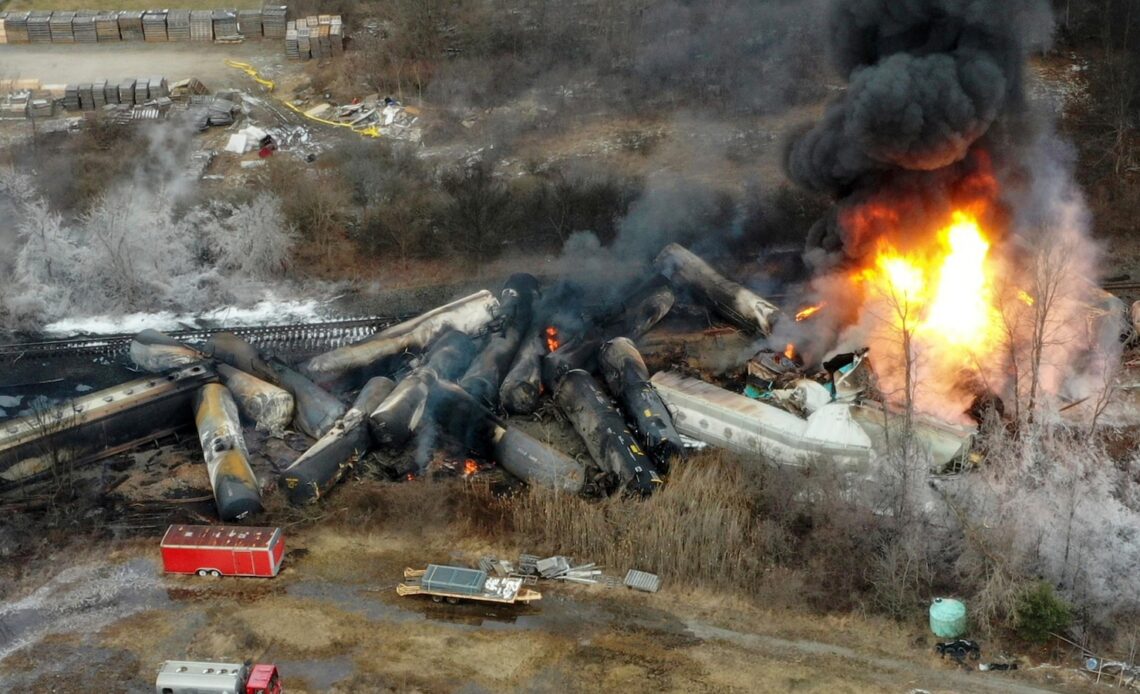The U.S. government has a specialized plane loaded with advanced sensors that officials brag is always ready to deploy within an hour of any kind of chemical disaster. But the plane didn’t fly over eastern Ohio until four days after the disastrous Norfolk Southern derailment there last year.
A whistleblower told The Associated Press that the Environmental Protection Agency’s ASPECT plane could have provided crucial data about the chemicals spewing into the air and water around East Palestine as the wreckage burned and forced people from their homes.
The man who wrote the software and helped interpret the data from the advanced radiological and infrared sensors on the plane said it also could have helped officials realize it wasn’t necessary to blow open five tank cars and burn the vinyl chloride inside because the plane’s sensors could have detected the cars’ temperatures more accurately than the responders on the ground who were having trouble safely getting close enough to check.
But the single-engine Cessna cargo plane didn’t fly over the train crash until a day after the controversial vent-and-burn action created a huge plume of black smoke over the entire area near the Ohio-Pennsylvania border.
Robert Kroutil said even when the plane did fly, it only gathered incomplete data. Then, when officials later realized some of the shortcomings of the mission, they asked the company Kroutil worked for, Kalman & Company, to draft plans for the flight and backdate them so they would look good if they turned up in a public records request, Kroutil said.
Kroutil said his team labeled the mission inconclusive in their report because only eight minutes of data was recorded in the two flights and the plane’s chemical sensors were turned off over the creeks. But he said EPA managers changed the report to declare the vent-and-burn successful because the plane found so few chemicals when it eventually did fly.
“We could tell the data provided from the ASPECT plane’s two East Palestine flights on February 7 was incomplete and irregular. We had no confidence in the data. We could not trust it,” Kroutil said.
The revelations about the use of the ASPECT plane in the aftermath of the worst rail disaster in a decade raises new questions about the effectiveness of the “whole-of-government response” in East Palestine the Biden administration touts.
The Government Accountability Project that represents Kroutil and has been critical of EPA’s response in East Palestine…
Click Here to Read the Full Original Article at ABC News: Health…

